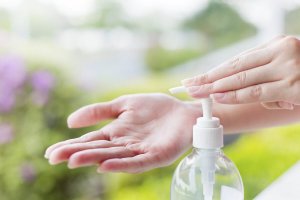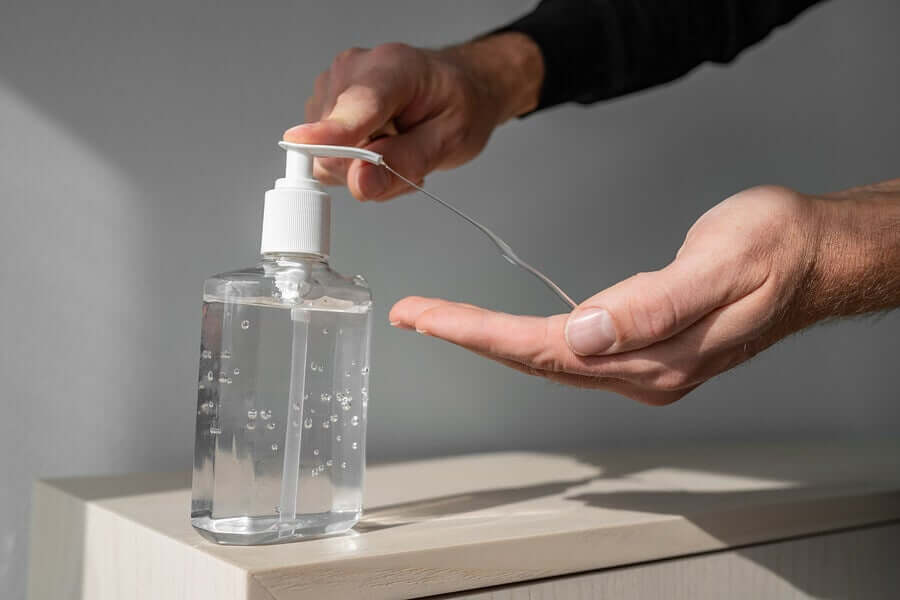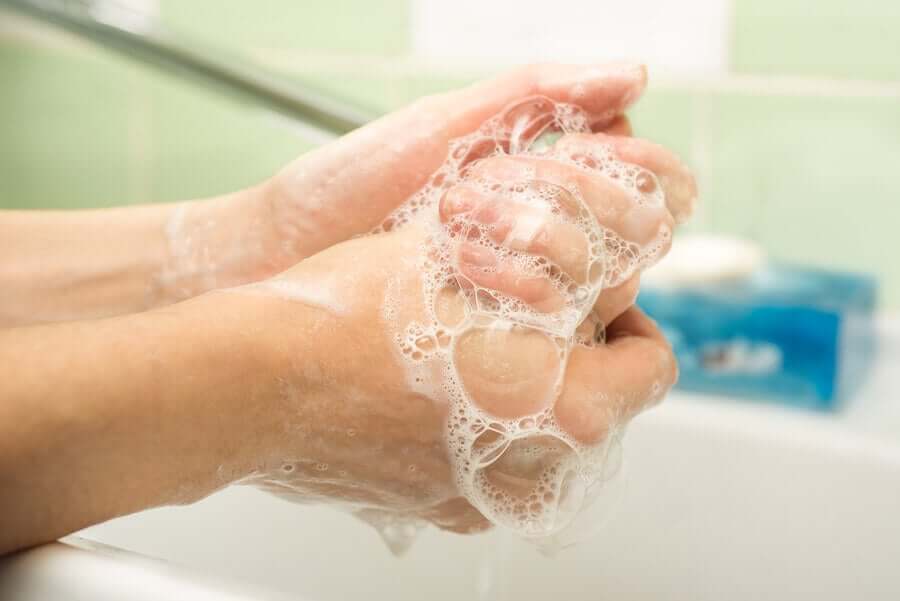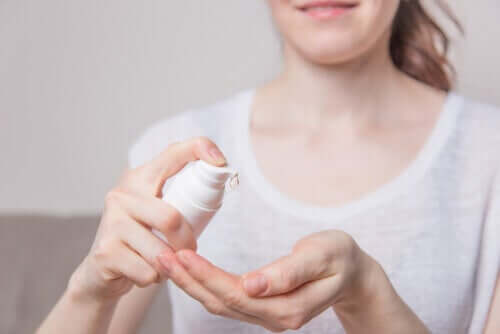Three Alternative Disinfectant Gels for Coronavirus

With the alerts that have been triggered by the spread of Covid-19, it isn’t surprising that we can’t readily find products such as disinfectant gel in our pharmacies and supermarkets. Because of this, some people are wondering if there are any other alternative disinfectant gels for coronavirus.
Well, the truth is that other products can ensure good hygiene and reduce the risk of infection by this virus. In fact, according to the Centers for Disease Control and Prevention (CDC), sanitizing gel shouldn’t actually be our first choice.
Although some people may think that it’s the ideal product to eliminate germs on our hands, in reality, gel sanitizer isn’t always the most effective option. Also, many people use antibacterial solutions instead of disinfectants. This is a problem when you consider that you’re dealing with a virus and not bacteria.
In this article, we’ll take a look at some effective alternatives.
Disinfectant gel: What you need to know

When people started to witness the spread of the coronavirus in the world, they started to purchase all types of hand sanitizing gel to ensure good hygiene. As the demand increased, so did the prices (and to quite considerable levels).
However, some mistakes are being made regarding the use of this product. First of all, many people aren’t taking into account that disinfectant gel is different from an antibacterial gel. The function of antibacterial gel is to kill bacteria or to prevent their growth. In the case of the coronavirus, we’re talking about a virus. Thus, the correct thing to do is to use products with virucidal capacity.
Often, formulas that are virucidal are also bactericidal. However, they must contain at least 70% alcohol. However, as pharmacist Mar Sieira explained to the Spanish newspaper La Vanguardia, the gel must contain more than just alcohol. For it to be effective against viruses, the product must contain both alcohol and ethanol.
Therefore, you shouldn’t opt for products that contain glitter, perfumes and other components. They make them visibly attractive, but not very effective. To be on the safe side, you should check the labels to see whether they have the properties we’ve previously mentioned.
You may be interested in: Coronavirus Disease (COVID-19) Symptoms
Alternative disinfectant gels for coronavirus
When it comes to reducing the risks associated with coronavirus, and even other viruses, there are different alternatives to disinfectant gels for coronavirus. In fact, the latter is not exactly the best option. The medical and scientific community points out that there are more effective alternatives that are within everyone’s reach.
Such is the case of soap, which has gained prominence amid the world’s Covid-19 crises. Below, we’ll talk about why it’s more effective and what other options we can take into account.
One of the best alternatives: Soap and water

Handwashing with soap and water is one of the most effective alternatives to gel sanitizers. The Center for Disease Control and Prevention suggests it as the first preventive option against the threat of coronavirus.
In this regard, they recommend washing for at least 20 seconds, especially after being in public places, blowing your nose, coughing, or sneezing.
But why soap and water?
There are scientific reasons for this. The coronavirus is protected by a lipid membrane that dissolves on contact with soap. This causes a collapse in the structure of the virus, which allows it to be inactivated. The most interesting thing of all is that all types of soaps work: liquid, bar, shower gel, etc., as long as they’re used in conjunction with water.
Disinfectant wipes
Given the shortage of disinfectant gel, another option we can consider is disinfectant wipes. They’re a good alternative when, for whatever reason, we don’t have access to soap and water. In addition to this, they’re also useful for cleaning surfaces that we have direct and continuous contact with.
As with gel, it’s important to read the labels to determine if they’re only bactericidal or if they also work against viruses too. Their advantage is that they’re disposable and, therefore, the risk of spreading germs is reduced. In any case, they should only be an option when handwashing with soap and water isn’t possible.
Sanitizing gel: The WHO proposal

Faced with a shortage of commercial disinfectants, the World Health Organization shared how to make a sanitizing gel, also known as an alcohol gel or antiseptic gel. However, the organization warns that the preparation of this type of prescription is more difficult than it seems.
The drawback is that, if the right concentration isn’t obtained, then it can be inefficient or even cause an unwanted reaction on the skin. This is not the case with commercial gels, as their concentration is specific, controlled, and standardized. Therefore, the guide emphasizes that the instructions are directed towards pharmacists, for them to prepare the correct formula, and suggests that they place the text on the wall of the place where they choose to prepare the solution.
Specifically, they’ve described two formulas:
- A formula containing ethanol, hydrogen peroxide, and glycerol.
- A solution containing isopropyl alcohol, hydrogen peroxide, and glycerol.
The amounts and method of processing are available in the Guide to Local Processing: WHO Recommended Formulations for Hand Sanitation.
Non-recommended disinfectant gels for coronavirus
Regarding the use of natural and homemade recipes as alternatives to disinfectant gels for coronavirus, WHO experts and health specialists point out that they’re unreliable options. Although they’ve become widely available through social networks, they’re not recommended. Instead, it’s best to ensure that you wash your hands thoroughly with soap and water several times a day.
This text is provided for informational purposes only and does not replace consultation with a professional. If in doubt, consult your specialist.








